Below are three images of advertisements that promote social change in one way or another. Select only one of the photos below to analyze, and using a specific sociological perspective of choice (i.e., functionalist, interactionist, conflict, feminist, etc.), analyze the advertisement based on your understanding of the perspectives discussed in the Schaefer text. Please remember to identify the image you selected and make sure to be as detailed as possible in your analysis (i.e., using your sociological perspective, describe the advertisement and what kind of message(s) those descriptions and images are conveying).
Your response should be posted below via the "Add Comment" link below. Please also make sure to include your name and email address as prompted (Note: your email address will not be published online). Each student is expected to "reply" to at least two comments posted by his/her peers by the following Sunday (July 8, 2012). 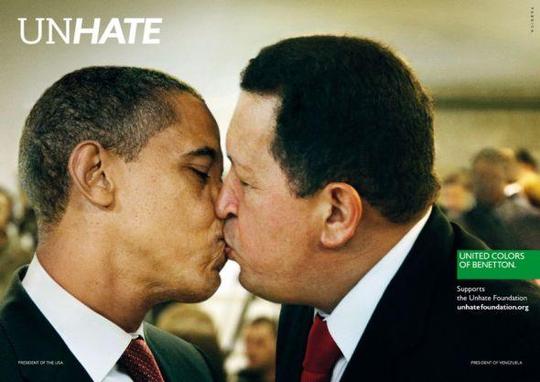 Image 1: One of the images from the United Colors of Benetton "Unhate" campaign, stating the company's support for the Unhate Foundation. Image of President Obama (U.S.A.) and President Chavez (Venezuela) locking lips.  Image 2: One of the images from the People for the Ethical Treatment of Animals (PETA) campaign. Image of singer Natalia Imbruglia and "Topsy" (the rabbit). 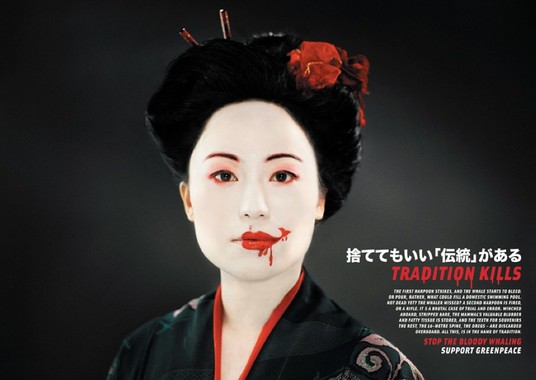 Image 3: One of the images from Greenpeace's anti-whaling campaign. The ad reads: "The first harpoon strikes, and the whale starts to bleed, or pour, rather, what could fill a domestic swimming pool. Not dead yet? The whaler missed? A second harpoon is fired, or a rifle. It’s a brutal case of trial and error. Winched aboard, stripped bare, the mammal’s valuable blubber and fatty tissue is stored, and the teeth for souvenirs the rest, the 10-metre spine, the dregs – are discarded overboard, all this, is in the name of tradition." Image of woman in traditional Japanese dress with a red silhouette of a whale painted on her lips. This blog assignment is due: Saturday, July 7, 2012, 11:59 p.m., EST
Religion and education are two distinct social institutions that oftentimes have a lot more in common than we think. In the major world religions (i.e., those that are most common worldwide), it is evident that the perception of education is of a great degree of importance across all faiths/religions. In the same instance, however, inequality exists within both social institutions, and sometimes even across social institutions (such as in the case of the articles you read in class this past Wednesday). Based on your understanding of how functionalists, interactionists, and conflict theorists perceive religion, education, stratification, and inequality, choose only one of the three perspectives to analyze the following: - Religious discrimination in school/education based on the specific article you read;
- and affirmative action in Brazil as shown in these two videos (Part I and Part II only).
***Note: For further reference, the PowerPoint briefly shown in class on religion and education is available here. Your response should be posted below via the "Add Comment" link below. Please also make sure to include your name and email address as prompted ( Note: your email address will not be published online). Each student is expected to "reply" to at least two comments posted by his/her peers by the following Sunday (July 1, 2012). This blog assignment is due: Monday, June 25, 2012, 5:30 p.m., EST
In the introduction of their book The Many Colors of Crime: Inequalities of Race, Ethnicity, and Crime in America, Peterson, Krivo, and Hagan (2006) state:
"Race and ethnicity are infrequently given serious consideration as structural influences creating criminogenic [Producing or tending to produce crime or criminality. According to NYU law professor James B. Jacobs, for example, "Alcohol is the most criminogenic substance in America."] conditions; the responses of actors, groups, and institutions; and the consequences that flow from these . . . these dimensions of stratification condition the very laws that make certain behaviors criminal, the perception of crime and those who are criminalized, the distribution of criminogenic conditions and processes, the determination of who becomes a victim of crime under which circumstances, the responses to laws and crime that make some more likely to be defined as criminal [i.e., labeling theory], and the way individuals and communities are positioned and empowered to respond to crime" (p. 1).
Do you agree with Peterson et al. (2006) that ethnicity and race are often overlooked with regard to the various above-mentioned factors related to crime and victimization? If so, how so? If not, why not? What if stratification dimensions of age and gender were also taken into consideration? How are such dimensions of stratification (race/ethnicity, gender, age) understood in relation to crime and deviance? Please explain and support your responses.
Your response should be posted below via the "Add Comment" link below. Please also make sure to include your name and email address as prompted (Note: your email address will not be published online). Each student is expected to "reply" to at least two comments posted by his/her peers by the following Sunday (July 1, 2012).
This blog assignment is due: Monday, June 25, 2012, 5:30 p.m., EST
This week, we delved into an array of subject matter, ranging from sociological research methods to culture, socialization, and social systems, interactions, and structures. Socialization, in particular, is a very significant factor in influencing individual and/or collective action and interaction. For this blog assignment, you are expected to create a Wordle image that includes all the various socializing agents you can think of when it comes to your own socialization as a human being. Click on " Create your own." Type and/or paste all the words representing these personal agents of socialization in the large dialog box (as many words can be entered as long as spaces or commas are typed between them). Once you have entered all the words you wanted to include, click on the "Go" button just below the box. Your Wordle image will appear, and you will be able to edit the format and layout before saving the image. You can also delete words from your Wordle even after you have created it by right-clicking on the word you want to delete (before saving it). After you have completed your Wordle image, please make sure to save it and paste the URL (website address/link) of your image in the comments section below. Below are two different graphic presentations of the same Wordle . . . Please note that Wordle organizes by single words only, so if you enter a word such as "high school," the words "high" and "school" will be organized separately, because a space is identified as a separator between two words.
Your response should be posted below via the "Add Comment" link below. Please also make sure to include your name and email address as prompted (Note: your email address will not be published online). Each student is expected to "reply" to at least two comments posted by his/her peers by the following Sunday (June 17, 2012).
This blog assignment is due: Monday, June 11, 2012, 5:30 p.m., EST
|



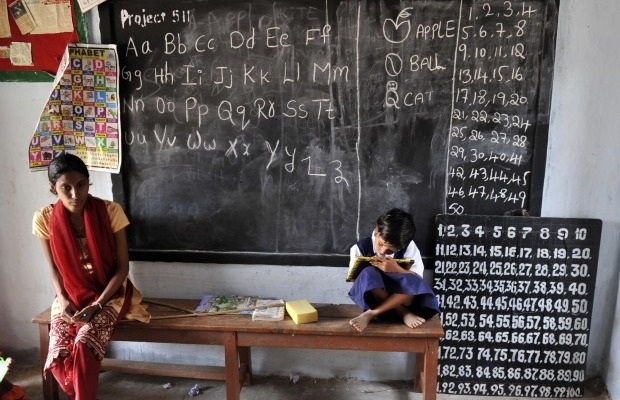

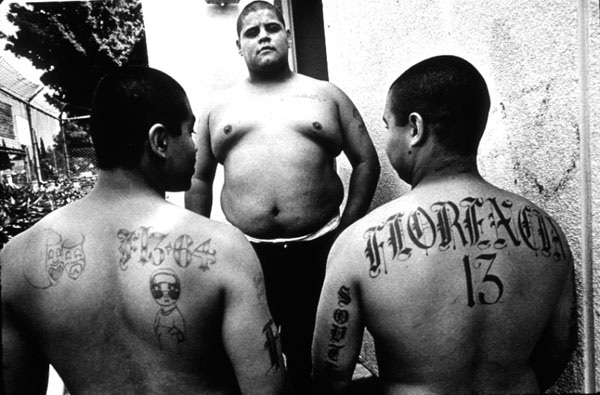
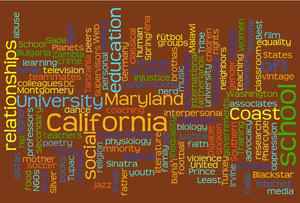
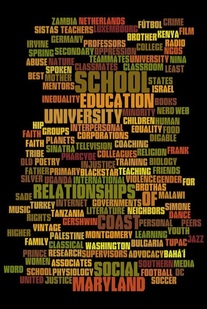
 RSS Feed
RSS Feed